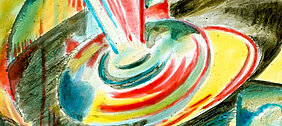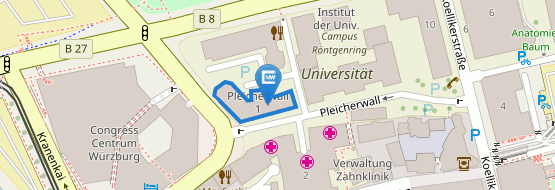A life archived: Georg Ernst Anschütz
01/28/2020After more than six years of work from 2013 to 2019 we are pleased to publish the estate of the psychologist Georg Ernst Anschütz.
Whereas in 2013 there were 28 moving boxes, today there are 164 archive boxes, with material from 1834-1954, where you can find just about everything that accumulates during a researcher's life: literature published by himself, notes, letters, photos, newspaper clippings, souvenirs, gifts and much more.
Anschutz’s estate can thus serve as a rich source on the life and work of the German psychologist. For it is above all his life that offers ample opportunity for questions. The psychologist Georg Ernst Anschütz is interesting in two respects: on the one hand, he dealt with the phenomenon of synaesthesia at an early age; on the other hand, his role in the Nazi era has to be regarded very critical.
About Georg Ernst Anschütz
Georg Ernst Anschütz was born on 15 November 1886 in Braunschweig. From 1905 to 1912 he studied music, philosophy and psychology in Munich, Leipzig, Bonn and Paris - and in the summer semester of 1909 also in Würzburg. In the same year he received his doctorate at the University of Munich.
After stays at the universities of Munich and Leipzig, Anschütz was a research assistant at the Psychological Laboratory of the University of Hamburg from 1913 to 1915.
On October 1, 1915, he went to the University of Constantinople as professor of psychology, where he remained until the end of World War I. From January 1919 Anschütz was employed at the Hanseatic University of Hamburg. In 1920 he was habilitated. From 1931 he worked there as a professor of psychology, music psychology and music aesthetics until his dismissal in 1945.
Anschütz Career in the so-called Third Reich
Apparently Anschütz had no problems with the National Socialists: After the Jewish head of the Institute of Psychology, William Stern, was removed from the university service in April 1933 and emigrated, Anschütz took over not his post but his duties. Anschütz became a member of the NSDAP in 1933; on November 11, 1933, he, like so many others, signed the commitment of professors at German universities and colleges to Adolf Hitler and the National Socialist state. From 1939 to 1945, he was head of the Lecturers' Association and Lecturers' Association leader of Hamburg University as well as “Gaudozentenbundführer” of Hamburg.
After the end of the Nazi state, Anschütz spent a year in captivity and struggled finding a job at a German university. Instead, until his death on December 25, 1953, he was the head of the "Freie Forschungsgesellschaft für Psychologie und Grenzgebiete des Wissens" in Hamburg.
Synaesthesia: When sounds carry colors
Warm colors, bitter cold and frozen silence: the phenomenon of synaesthesia is firmly anchored in everyday speech, even if most of us are probably not even aware of it. Synaesthesia means: A person reacts to a sensory stimulus with two or more different perceptions. He does not only listen to music, for example, but sees shapes and colours at the same time. Other synesthetes associate certain sounds with smells or tastes.
One of the first researchers in Germany to scientifically deal with the phenomenon of synaesthesia was the psychologist Georg Ernst Anschütz.
In the late 1920s and 1930s he concentrated on the research of synaesthesia, for example on "colour hearing". He organized several conference at Hamburg on that topic, and published the results in three volumes. These works may still be of interest today in the psychology and science of music as well as in neuropsychology, for example in connection with the study of autism. For among autistic people there is an above-average rate of synaesthetes.
How Anschütz´s estate came to Würzburg
His estate had been owned by Shabo Talay, Professor of Semitic Philology and Arabic Studies at the University of Bergen, until 2013. Through his work, Shabo Talay had met Helga Anschütz, a daughter of the psychologist who was an ethnologist and had studied Christian minorities in the Middle East. After her death, Talay learned that she had appointed him as heir to her father's estate, with the task of making this estate accessible to the public. For this reason, Shabo Talay decided to give Anschütz’s documents to the Adolf-Würth-Center for the History of Psychology at Würzburg University. It is therefore our pleasure to publish a finding aid and to make the estate of Georg Anschütz thereby accessible to research and the public, thus following up on Helga Anschütz' request. We hope, that Anschütz´s legacy contributes to present research and allows us to get to know Anschütz' life and research better, thereby maybe answering unsolved questions. Please see also our news from May 2012.
Findingaid Georg Ernst Anschuetz
Tanja Seibert



